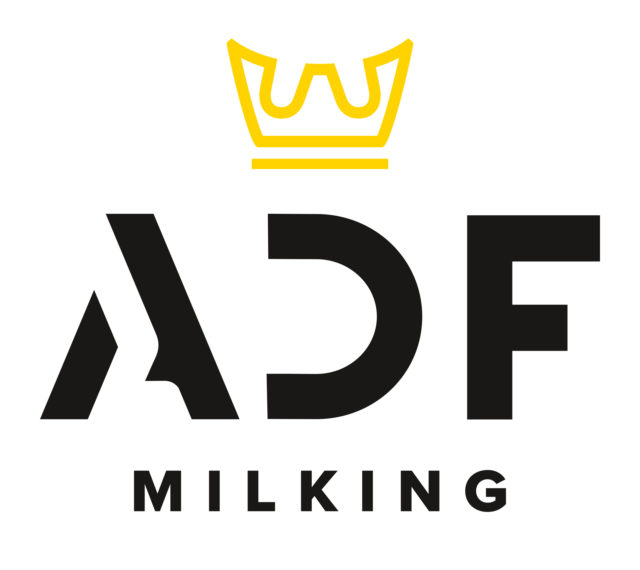Canadian dairy farmers have made great strides in milk quality and udder health. This represents a history of consistent hard work and a passion for continual improvement, and thanks to advances in genetics, Canadian dairy cows are making more milk than ever.
With so many improvements in herd management, why is mastitis still the most significant disease on the Canadian dairy farm? Dr. Stephen LeBlanc, a professor at the University of Guelph, has given an interesting analogy, comparing NHL players with the modern dairy cow. Both are top performers.
In the NHL, despite having the best nutritionists, trainers and physiotherapists at their disposal, half (51%) of players will miss a game due to an injury every season. There is an inherent risk to operating at such a high performance level. Similarly, approximately 50% of dairy cows, the pinnacle of metabolic athletes within the species, will experience a production-associated disease (e.g., mastitis, metritis, ketosis, displaced abomasum) in every lactation. Even in the best facilities with the best management, mastitis is an inherent risk that can’t be eliminated, so our aim is to reduce it.
Mastitis economics
Financially, mastitis continues to be a big deal. A 2018 study found the average Canadian herd has 23 cases of mastitis per 100 cows per year. This equates to a staggering $66,200 per year. This includes the direct and indirect costs associated with prevention measures (15%), clinical mastitis (34%) and most of all, subclinical mastitis (48%).
Recall that subclinical mastitis is characterized by normal-appearing milk with an elevated somatic cell count (SCC) and reduced milk yield. This means the largest economic impact of udder health on our farms comes from the mastitis we don’t see; however, that is a topic for another article. My point is this: As production per cow is continuing to climb, subclinical and clinical mastitis is becoming continually more expensive.
The pathogens causing mastitis in Canada
Despite excellent progress in managing contagious pathogens, Staphylococcus aureus and non-aureus staphylococci (NAS) still make up over 30% of mastitis cases in Canada (Figure 1). Environmental pathogens like Escherichia coli, Klebsiella and Streptococcus uberis are also driving mastitis. These are followed by Streptococcus dysgalactiae spp. Enterococcus, other streptococcus spp., yeast and miscellaneous others (e.g., prototheca, Serratia marcescens, etc.).

Evolving guidelines for udder health management
The National Mastitis Council (NMC) is an international organization seen as the trusted source of guidance on reducing mastitis and improving milk quality. The NMC first developed the five-point program in the 1960s as a tool to reduce bovine mastitis rates and somatic cell count (SCC) in milk. The focus was post-dipping, blanket dry cow therapy, treating clinical cases during lactation, equipment maintenance and culling problem cows. Thanks to these principles, the prevalence of contagious pathogens has been reduced, the SCC in most developed dairy markets is less than 200,000 and clinical mastitis rates are 35%-40% (down from 150%). However, with modern changes in technology, growing challenges with antimicrobial resistance and new knowledge in the fields of nutrition, genetics and immunology, a variety of necessary updates have been made.
As you might expect, modern udder health management plans still focus on milking technique and hygiene, equipment maintenance and strategic culling. Today, this has also expanded to propose selective dry cow therapy, treatment strategies based on pathogen-type diagnosis and cow history, and boosting the cow’s immune system with nutrition, genetics and vaccination strategies.
Optimum udder health is achieved by using all available tools effectively and is best accomplished by collaborating with your farm advisers.
Including a mastitis vaccine in your udder health management toolbox
Mechanism of action
Following injection with a mastitis vaccine, the cow's immune system is stimulated to build defenses against specific bacteria. Defenses such as specialized immune cells and antibodies are then disseminated throughout her body, including the udder itself. While no vaccine will eliminate the risk of intramammary infections, they offer a variety of benefits.
The top 8 reasons to vaccinate against mastitis
Note: Not all these statements apply to every available mastitis vaccine. Review the specific features of the different mastitis vaccines with your herd veterinarian to determine which best fits your herd.
1. Better overall control of mastitis
- Vaccinated cows have fewer new infections, leading to less mastitis and fewer chronic cases and more herd resistance to mastitis over time.
- Some vaccines (new-generation) result in cows being cured faster and shedding less bacteria in the milk, reducing transmission to herdmates.
2. Improved production performance
- Staph-vaccinated herds see a reduction in their bulk tank SCC.
- Some vaccines are associated with improved milk yields and increased milk solids.
- A properly vaccinated herd will have fewer fluctuations in production caused by mastitis outbreaks.
3. Greater farm profitability
- Factoring in the direct costs associated with the vaccines themselves and the labour required to deliver them, studies have shown that vaccinated herds see a positive return on investment.
- Direct costs associated with mastitis are lower in properly vaccinated herds – fewer treatments, less labour and fewer emergency/sick cow vet visits.
- Indirect costs associated with mastitis are lower in staph-vaccinated herds due to lower SCCs.
4. Better animal and farmer welfare
- Cases of mastitis in vaccinated cows are less severe than in non-vaccinated cows. Mastitis can be anywhere from uncomfortable to severely painful. It makes sense to prevent painful diseases if we can do so.
- No farmer enjoys having to treat mastitis, and mastitis outbreaks are stressful. No farmer wants to lose a high-producing cow with toxic mastitis. No farmer wants to cull a good cow prematurely because of high SCC or chronic mastitis.
5. Fewer antibiotics used
- Vaccinated herds use fewer antimicrobials. This means less cost for the dairy and helps address the serious and growing challenge of antimicrobial resistance.
- Success with selective dry cow therapy improves when non-antibiotic tools are used to reduce new infection (e.g., teat sealants, nutritional strategies and vaccination).
6. Higher colostrum quality
- Vaccinated cows with lower mastitis rates can produce higher-quality colostrum.
7. Improved reproductive performance
- Vaccination can indirectly improve fertility as mastitis can negatively impact reproductive performance.
8. Greater herd longevity
- Vaccination can lower culling rates associated with poor udder health.
- Vaccination can contribute to fewer deaths and longer productive lifespans by reducing the risk of severe mastitis.
Bonus reason: The new-generation mastitis vaccines available in Canada (a J5 coliform plus S. aureus combination vaccine and an S. uberis vaccine) result in minimal, if any, milk drop in fresh cows.

The Canadian dairy industry has a lot to be proud of. This is a resilient industry that has, and will continue to, navigate emerging challenges. Mastitis (and other production-associated diseases) will always be something Canadian dairy producers will have to face due to the nature of working with our “athlete” dairy cows. Mastitis has always been expensive, incurring direct and indirect costs, and it is only getting more expensive as production per cow increases.
Vaccination is a tool that works synergistically with other udder health strategies, and the benefits affect all arenas on the farm – animal health, farmer satisfaction, farm profitability and judicious use of antimicrobials. In a continually evolving industry, mastitis vaccination represents an important tool, among other important tools, that will help keep Canadian dairy as resilient as always.
Considerations when including a mastitis vaccine in your management protocols
Choosing a vaccine
While farms may be challenged with a particular pathogen, generally speaking, mastitis on Canadian dairy farms is caused by a variety of pathogens. Using vaccines that target multiple pathogens will provide maximum protection. We are fortunate that in Canada we have vaccines that when combined can control 75% of the common causes of mastitis.
Tips for best success
- Talk to your vet about the best vaccine schedule for your herd. Some vaccines may have different options for when they may be given. The best option may depend on your herd’s predominant pathogen type and/or at what stage of lactation you most frequently see cases of clinical mastitis.
- Stay committed to your entire udder health management program. Vaccines are not a magic wand. Like teat dips or other udder health strategies, vaccines are not a stand-alone solution but rather an important tool alongside the other important tools in your herd health toolbox.
- Give it time. Building herd immunity takes time, so expect a lag between the time you begin vaccinating to the time you start to enjoy tangible benefits. Your starting point also makes a difference. In herds with high levels of S. aureus, it will take longer to appreciate all the benefits of the vaccine. Speak with your herd veterinarian about what to expect upon implementing a mastitis vaccine protocol.











